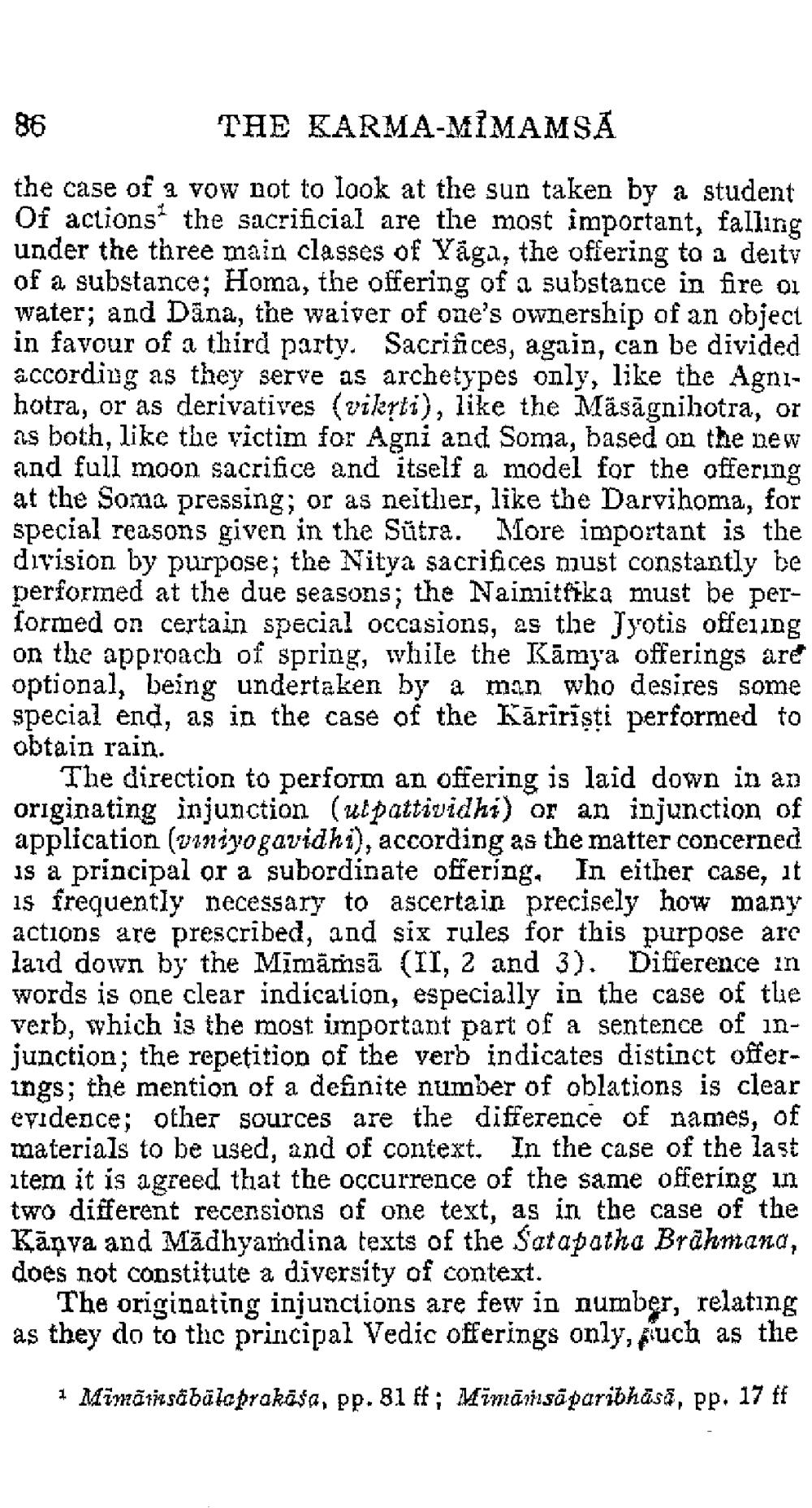________________
86
THE KARMA-MIMAMSA
the case of 2 vow not to look at the sun taken by a student Of actions the sacrificial are the most important, falling under the three main classes of Väga, the offering to a deity of a substance; Homa, the offering of a substance in fire oi water; and Däna, the waiver of one's ownership of an object in favour of a third party. Sacrifices, again, can be divided according as they serve as archetypes only, like the Agnihotra, or as derivatives (vilarti), like the Mäsāgnihotra, or as both, like the victim for Agni and Soma, based on the new and full moon sacrifice and itself a model for the offering at the Soma pressing; or as neither, like the Darvihoma, for special reasons given in the Sütza. More important is the division by purpose; the Nitya sacrifices must constantly be performed at the due seasons; the Naimitüka must be performed on certain special occasions, as the Jyotis offeiing on the approach of spring, while the Kāmya offerings are optional, being undertaken by a man who desires some special end, as in the case of the Kāririşti performed to obtain rain.
The direction to perform an offering is laid down in an originating injunction (utpattividhi) or an injunction of application (Diniyogavidhi), according as the matter concerned is a principal or a subordinate offering. In either case, it is frequently necessary to ascertain precisely how many actions are prescribed, and six rules for this purpose are laid down by the Mīmāṁsā (II, 2 and 3). Difference in words is one clear indication, especially in the case of the verb, which is the most important part of a sentence of injunction; the repetition of the verb indicates distinct offerings; the mention of a definite number of oblations is clear evidence; other sources are the difference of names, of materials to be used, and of context. In the case of the last item it is agreed that the occurrence of the same offering in two different recensions of one text, as in the case of the Kānya and Madhyamdina texts of the Satapatha Brāhmand, does not constitute a diversity of context.
The originating injunctions are few in number, relating as they do to thc principal Vedic offerings only, Auch as the
4 Mimārisõbāloprakāša, pp. 81 ff; Mimārisäparibhasa, pp. 17 ff




